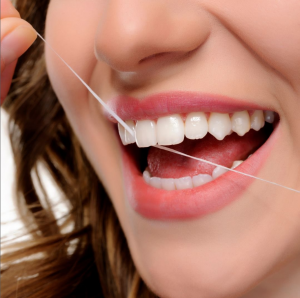Flossing is an essential component of good oral hygiene, yet many people make common flossing mistakes that can compromise their dental health. In this comprehensive guide, we will eliminate these common flossing errors, their potential consequences, and provide practical solutions to correct them, ensuring that your flossing routine is both effective and beneficial.
Mistake 1: Skipping Flossing
Consequence: Skipping flossing leaves harmful plaque and food particles between your teeth and along the gumline. Over time, this can lead to cavities, gum disease, and bad breath.
Solution: Make flossing a daily habit. Set a specific time, such as before bedtime, and stick to it. If you often forget, consider setting a reminder on your phone or leaving visible cues like floss in plain sight.
Mistake 2: Rushing Through Flossing
Consequence: Flossing too quickly may result in ineffective plaque removal and potential damage to your gums.
Solution: Take your time. Be gentle when guiding the floss between your teeth and along the gumline. Ensure you clean each tooth thoroughly. It’s not a race; the goal is quality, not speed.
Mistake 3: Using the Wrong Type of Floss
Consequence: Different individuals have different dental needs, and using the wrong type of floss can be ineffective or uncomfortable.
Solution: Choose the right floss for your teeth. There are various options, including waxed, unwaxed, dental tape, expanding floss, and specialized floss for braces or sensitive gums. Consult your dentist if you’re unsure which type of dental floss is best for you.
Mistake 4: Not Using Enough Floss
Consequence: Using too little floss can result in reusing the same section between teeth, potentially transferring bacteria.
Solution: Use an adequate length of floss (around 18 inches) for each flossing session. This ensures you have a clean section for every tooth.
Mistake 5: Snapping the Floss
Consequence: Snapping the floss between your teeth can damage your gums and cause discomfort.
Solution: Instead of snapping, gently guide the floss between your teeth using a back-and-forth sawing motion. Then, curve the floss into a C-shape to hug the tooth and clean both sides.
Mistake 6: Ignoring the Gumline
Consequence: Neglecting to clean along the gumline can leave plaque untouched, contributing to gum disease.
Solution: Glide the floss gently beneath the gumline and curve it around the tooth, ensuring you remove plaque from this critical area.
Mistake 7: Flossing Too Aggressively
Consequence: Aggressive flossing can lead to gum tissue damage, gum recession, and tooth enamel erosion.
Solution: Be gentle. Flossing should not hurt. Use soft, controlled movements to clean between your teeth and along the gumline.
Mistake 8: Inconsistent Flossing
Consequence: Inconsistent flossing doesn’t provide continuous protection against plaque buildup and oral health issues.
Solution: Make flossing a part of your daily routine. Consistency is key to reaping the benefits of flossing.
Mistake 9: Avoiding Professional Guidance
Consequence: Ignoring professional advice from your dentist can lead to inadequate flossing and oral health issues.
Solution: Consult your dentist or dental hygienist for guidance on your flossing technique and recommendations for specific dental issues.
Mistake 10: Not Adjusting for Dental Work
Consequence: Neglecting to adapt your flossing routine for dental work like braces or bridges can lead to inadequate cleaning.
Solution: If you have dental work, use specialized tools like floss threaders, interdental brushes, or water flossers to clean around and under these appliances effectively.
By addressing these common flossing mistakes and following the suggested solutions, you can maintain a more effective flossing routine and contribute to better oral health. Remember that flossing, when done correctly, is a valuable tool in the fight against cavities, gum disease, and bad breath.

